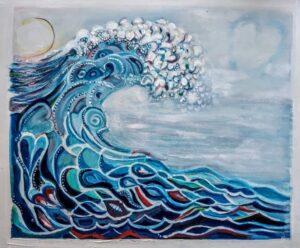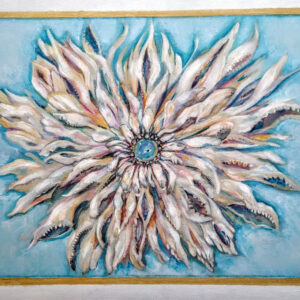
Guardrails are perspective, procedure, expression, reaction. Artists, some eyes are open, others aren’t, many COULD be. Everyone, it is “cognition about cognition” in one’s own processing. See how/why you think, face it and discover how you really process YOUR thoughts — Whatever process or arrival, deeply understand your current abilities and mindsets, what they are, at what levels have you cultivated new knowledge and better skills — and for what purposes. How are they serving you: how were they formed?
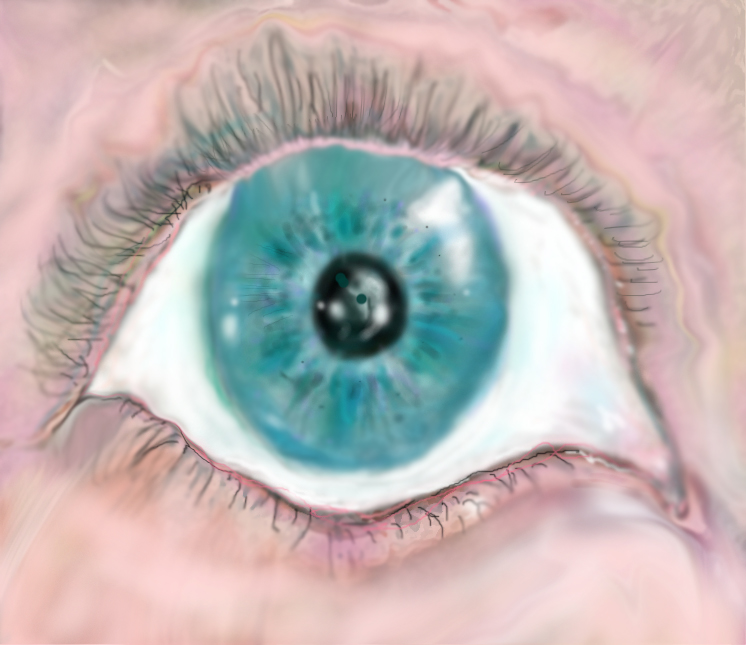
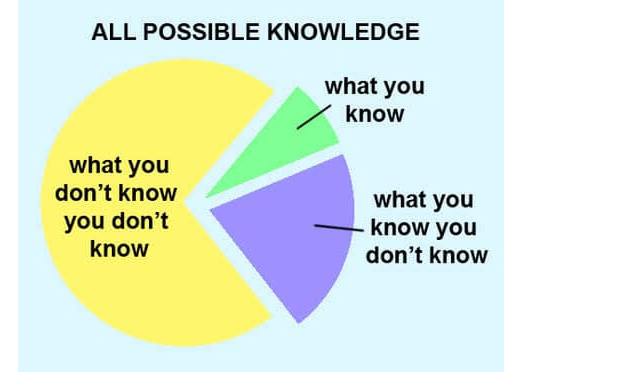
Posted art continues below, a few of us are in editing and creating stages. Each perspective error below can be applied in any discipline. Excited to be working alongside brilliant minds! Aren’t you thrilled about it also? (applause, accolades galore, please) A favorite personal learning style used when new ideas need images, see people’s responses.
“Vision without execution is hallucination.” — Thomas Edison
The Following is from RUGGIERO’S book, “BEYOND FEELINGS”
For those hand workers and artisans who have attempted art therapy sessions and have deeper questions, please consider always: A person’s most important thoughts and feelings, originating from the unconscious, at first are more easily expressed in images than in words. In actual fact, art psychotherapists and Jungian therapists use mandalas as a method through which people obtain increased self-awareness, and self-expression.
BEYOND FEELINGS
It is a great practice to put an image on each of the “errors” below as a mnemonic exercise, and the artist has to truly be creative while formulating. Many name it “my doodling”….This may well assist you but be true with assessments of your own processes. For those sharing sessions, see below blackened prompts. Email or ask to post your result on Fedowski’s assignment page blog. All reactions aka “doodle stages” are your creating images for each guardrail.
Problems people face with critical thinking. Understand your own guardrails:
Ø Errors of Perspective
Ø Errors of Procedure
Ø Errors of Expression
Ø Errors of Reaction
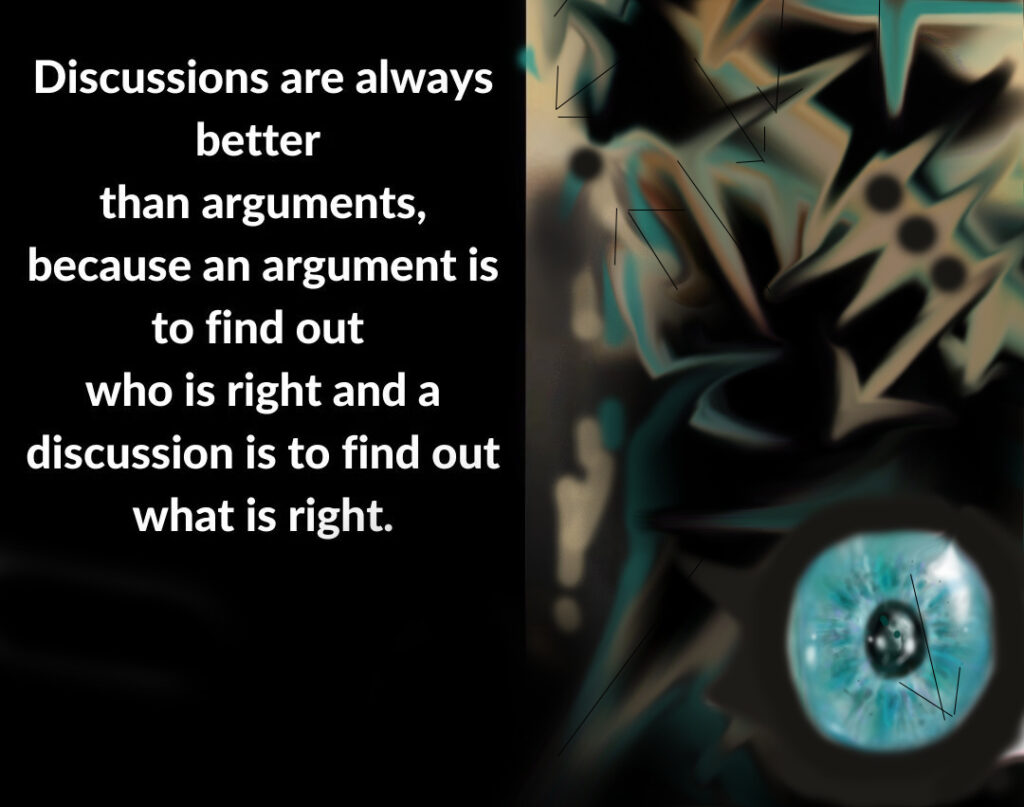
(The below critical thinking constructs were intended for logical / argument tools, purposes. However, art therapy sessions promote critical thinking and these guardrails provide prompts for imagination! A great opportunity to fully understand the types of processing and/or perspective errors; the exercise in black depicts examples of doodling images — as one’s constructs become clearer in the mind.)
Errors of Perspective
The Error of Perspective: How to Recognize and Deal with It
Poverty of Aspect — Limiting one’s perspective on issues; having tunnel vision. Poverty of aspect sometimes is attributable to intellectual sloth; other times it is a by-product of specialized education and training. To avoid poverty of aspect when evaluating issues, look beyond the familiar, examine all relevant points of view, and understand before judging.
Doodle in Process is crisp focus on a small area, blur or fog in others. All are summoning [in creative ways, some more apparent and visible than others] your attention in creative ways to see them more clearly.
Unwarranted Assumptions — Assumptions are ideas that are taken for granted rather than consciously reasoned out. When what is taken for granted is unjustified by one’s experience or by the situation, the assumption is unwarranted. Because assumptions seldom are expressed directly, the only way to identify them is to “read between the lines” for what is unstated but clearly implied.
Doodle in Process is a surrounding wall with weaves bearing the word or examples of an “assumptive belief” on each reef, but the area has ?truth horns blowing out the actual facts to collapse false or unwarranted assumptions.
Either/or Outlook —- The expectation that the only reasonable view of any issue will be total affirmation or total rejection. This error rules out the possibility that the most reasonable view might lie between the extremes. To avoid this error, consider all possible alternatives.
Doodle in Process: a drawing of one strait, or road that is clearer and righteously glowing and the sides along it are blurred possibilities but could well be useful yet via different means or methods — but the either/or fallacy shows that they are exed out.
Mindless Conformity —- Adopting others’ views unthinkingly because we are too lazy or fearful to form our own. To overcome this error, develop the habit of resisting the internal and external pressures and make up your own mind.
Absolutism ——- The belief that rules do not admit of exceptions. This belief causes us to demand that the truth be neat and simple, when in reality it is often messy and complex. To avoid this error, accept the truth as you find it rather than requiring that it [fit] your preconceptions.
Relativism —– The belief that no view is better than any other, that any idea you choose to embrace is automatically correct. To avoid relativism, remind yourself that some ideas and some standards of conduct are better than others and that the challenge of critical thinking is to discover the best ones.
Bias For or Against Change —- Bias for change assumes that change is always for the best; bias against change assumes that change is always for the worst. To avoid both errors, give any proposal for change a fair hearing and decide, apart from your predisposition, whether the change is actually positive or negative.
Doodle in Process:
Errors of Procedure
The Error How to Recognize and Deal with It
Biased Consideration of Evidence –—One form of this error is seeking evidence that confirm your bias and ignoring evidence that challenges it. Another is interpreting evidence in a way that favors your bias. To avoid this error, begin your investigation by seeking out individuals whose views oppose your bias, then go on to those whose views support it. Also, choose the most reasonable interpretation of the evidence.
Doodle in Process:
Double Standard —- Using one set of criteria for judging arguments we agree with and another standard for judging arguments we disagree with. To avoid this error, decide in advance what judgment criteria you will use and apply those criteria consistently, regardless of whether the data in question support your view.
Doodle in Process:
Hasty Conclusion —- A premature judgment–that is, a judgment made without sufficient evidence. To avoid drawing a hasty conclusion, identify all possible conclusions you select any one. Then decide whether you have sufficient evidence to support any of those conclusions and, if so, which conclusion that is.
Doodle in Process:
Over-generalization and Stereotyping —- Over-generalization is ascribing to all the members of a group a quality that fits only some members. A stereotype is an over-generalization that is rigidly maintained. To avoid these errors, resist the urge to force individual people, places, and things into hard categories. And keep in mind that the more limited your experience, the more modest your assertions should be.
Doodle in Process:
Oversimplification —— Oversimplification goes beyond making complex ideas easier to grasp–it twists and distorts the ideas. Instead of informing people, oversimplification misleads them. To avoid this error, refuse to adopt superficial views and make a special effort to understand issues in their complexity.
Doodle in Process:
Post Hoc Fallacy —- this error is rooted in the idea that when one thing occurs after another, it must be the result of the other, when in reality the sequence may be coincidental. To avoid the post hoc fallacy, withhold judgment of a cause-and effect relationship until you have ruled out other possible causes, including coincidence.
Doodle in Process:
Errors of Expression
The Error How to Recognize and Deal with It
Contradiction —- To claim that a statement is both true and false at the same time in the same way. To avoid this error, monitor what you say and write. The moment you detect any inconsistency, examine it carefully. Decide whether it is explainable or whether it constitutes a contradiction. If it is a contradiction, revise your statement to make it consistent and reasonable.
Doodle in Process:
Arguing in a Circle —- Attempting to prove a statement by repeating it in a different form. To avoid this error, check your arguments to be sure you are offering genuine evidence and not merely repeating your claim.
Doodle in Process:
Meaningless Statement —- A statement in which the reasoning presented makes no sense. To avoid this error, check to be sure that the reasons you offer to explain your thoughts and actions really do explain them.
Doodle in Process:
Mistaken Authority — Ascribing authority to someone who does not possess it. To avoid this error, check to be sure that all the sources you cite as authorities possess expertise in the particular subject you are writing or speaking about.
Doodle in Process:
False Analogy —- An analogy is an attempt to explain something relatively unfamiliar by referring to something different but more familiar, saying, in effect, “This is like that.” A false analogy claims similarities that do not withstand scrutiny. To avoid this error, test your analogies to be sure that the similarities they claim are real and reasonable and that no important dissimilarities exist.
Doodle in Process:
Irrational Appeal —- Appeals to emotion, tradition, moderation, authority, common belief, and tolerance may be either rational or irrational. They are irrational, and therefore unacceptable, when they are unreasonable in the particular situation under discussion and/or when they discourage thought. To avoid this error, make sure your appeals complement thought rather than substitute for it.
Doodle in Process:
Errors of Reaction
The Error How to Recognize and Deal with It
Automatic Rejection — The refusal to give criticism of your ideas (or behaviors) a fair hearing. To avoid this error, think of your ideas as possessions that you can keep or discard rather than as extensions of your ego. This will make you less defensive about them.
Doodle in Process:
Changing the Subject Abruptly and deceptively turning a discussion away from the issue under discussion. To avoid this error, face difficult questions head-on rather than trying to avoid them.
Doodle in Process:
Shifting the Burden of Proof — Demanding that others disprove our assertions. To avoid this error, understand that the burden of supporting any assertions rests with the person who makes it rather than the one who questions it. Accept the responsibility of supporting your assertions.
Doodle in Process:
Straw Man —- To commit the error of straw man is to put false words in someone else’s mouth and then expose their falsity, conveniently forgetting that the other person never said them. To avoid this error, be scrupulously accurate in quoting or paraphrasing other people’s words.
Doodle in Process:
Attacking the Critic — Attempting to discredit an idea or argument by disparaging the person who expressed it. To avoid attacking the critic, focus your critical thinking on ideas rather than on people who expressed them.
Doodle in Process:
(taken from: Beyond Feelings, A Guide to Critical Thinking, 8th ed. by Vincent Ryan Ruggiero; www.mhhe.com)
DO I KNOW IT, WELL….UH…I. ah,…
What is the activity that everyone claims is important but few people have actually mastered? Well, here is only some of its synonyms:
Fancy, reason, imagine, reflect, meditate, ruminate, muse, speculate, ponder, weigh, realize, dream, consider, conceive, cogitate, deliberate, digest. You know what the word is… it starts with “T” and ends with “K” and is only one syllable!
The late American philosopher William Barrett observed that “history is, fundamentally, the adventure of human consciousness” and “the fundamental history of humankind is the history of mind.”
And there is an important distinction between thinking and feeling. Feeling is a subjective response that reflects emotion, sentiment, or desire; most feelings arrive automatically. Thinking has categories: reflective, creative, and critical. Mixing thinking and feeling incorporates values, beliefs, questions, emotions, experiences, ideals, convictions, and a whole lot more pondering, weighing, sensing, … subjectivity vs. objectivity. Kind of fun?
Stereotyping is Natural but Usually Harm Promoting.
Blindly choosing to accept and exercise unfair stereotyping is a result of years and years of socialization. Stereotyping is brought to us by family members, friends, schools, churches, and above all, the media reporting with its attempt to entertain us while informing us. The media encompasses anything that communicates to us outside our immediate in-groups: literature, movies , television sitcoms, books, comic books, and Facebook, Instagram, twitter. These have featured Mid- Easterners in movies during decades of various mid-east upheavals. Many of these images have fed inaccuracy. Xenophobia is the result when ethnic groups are feared; sensational fear about Middle Easterners has been fed into the West’s consciousness.
Literary Terms are often ignored in many stages of learning. To know and understand them are very useful for artists.
https://literaryterms.net/innuendo/
HOW ALIKE, HOW NOT ALIKE
Comparison and Contrast
Comparison involves the examination and explanation of similarities between concepts or objects. We compare the two students to see how else they are similar to one another.
Contrast involves the same strategy, looking at each of the students, but focuses on the differences.
See the differences (contrasting) and similarities (comparing). We frequently ask ourselves, “How are those similar?” or “What makes that different?” We might note that both of what we are analyzing will offer the same thing in one arena, but we will need to contrast to see the differences in other aspects of it. Whether we choose to focus on similarities or differences, the purpose of comparisons and contrasts is to make a decision or judgment about the items examined: We engage in comparisons and contrasts to decide issues and ideas and things.
THE IMPLICATION IS… THAT I NEED TO INFER
Have you learned about inferences? What does it mean, “to infer”? To infer is a skill in detecting the meaning that the author or speaker has not explicitly spelled out. Look at it as blatancy versus slight evidences.
A reader — or listener — spots these slight cues in the supporting details.
Nearly everyone has heard the term or idiom “Reading between the lines.” Probably you’ve been able to see or feel inferences.
The ability to infer is a skill, it is detection. One can imply or suggest – an idea. By analyzing or digesting the supporting details, one understands implications. The meaning is implied, inferences are made.
People’s daily actions imply something. Someone might not actually tell you verbatim to communicate they are in a certain mood. Their actions will show that they are bored, mad, happy or hopeful. For instance, slamming something down is an implication. One might infer that their action means they are mad.
______________________________________________________.
WEAR IT WELL, HOUSEWIFE!
Do you know who Betty Crocker is? Does an apron wearing female in a kitchen help the image come to mind? She is the longtime female symbol of a cereal company, General Mills. In its home service department a woman by the name of Marjorie Child Husted started the Better Crocker name by replying to consumer inquiries with a Betty Crocker signature. Her image first appeared in 1921 and was used for advertising to housewives. The housewives, it was presumed, would identify with a woman who looked much like themselves, collectively, and therefore would trust Betty Crocker’s advice on flour, cereals, and other processed foods. She was designed to look like a contemporary woman, and the twenties were an era of revolution in women’s appearance. The dress reform of the times included short skirts, bobbed hair, and new makeup. Better Crocker did have a few updated fashion changes throughout the years. This reassured the consumers that a woman could be both stylish and care about what their families ate. A woman drew the original Betty Crocker. Her name was Neysa McMein who had also done covers for major magazines prior to World War I and would go on to draw patriotic posters for World War II.
PROBLEM SOLVING and a PSYCHOLOGY LINGO
People approach problem-solving in a varied degree of ways, usually by combining thinking, processing and reasoning. We organize our world through concepts and all of our schema (cognitive structures) will differ according to the amount of concepts in our mental repertoire. We test ideas using relationships and then forming concepts. Future problem solving is used when mentally setting up a preconceived notion of how to look at a problem.
Reiterated, a basic “taxonomy” structure statement shows how we organize our concepts: “A bird is an animal that has wings and flies.” We organize our world through concepts. We test ideas using relationships and then forming concepts. “Animals with wings are the ones that fly.” A mental set or set is the preconceived notion of how to look at a problem. This may help future problem solving. “A bird cage is good for housing birds.” The more connected and populated our schema, the better we can examine problems or try different solutions.
A person’s schema is the cognitive structure that includes ideas about events and objects. The objects are categorized based on how well they match with existing attributes. “This animal has wings, so it is probably a bird.” Scripts are ideas about the way events typically unfold. “When people go to the movies, they sit in their seats and are quiet.” Prototypes are the representative or “usual” type of an event or object. “A scientist is someone who is good in math and does not write poetry.”
Other types of psychological lexicon below might help a thinker figure out their own approaches to problem solving processes and methods. One of the most favorite that Reading teachers use is “metacognition.”
- Metacognition refers to the process of thinking about your own thinking. It might involve knowing what solving strategies to apply and when to apply them, or knowing how to adapt ones thinking to new situations.
- Insight is having a new perspective on an old problem, the “A-ha!” experience.
- Convergent thinking is the type of thinking used to find the one solution to a problem. Math is an example. Convergent and divergent thinking were first defined by J.P. Guilford.
- Divergent thinking is used when more than one possibility exists in a situation. Playing chess or creative thinking are examples. In a group, the presence of a dissenter leads to divergent thinking.
- Functional fixedness is the idea that people develop closed minds about the functions of certain objects. From this, they cannot think of creative uses or think divergently. “a bird cage is only good for housing birds.”
- Problem space is the sum total of possible moves that one might make in order to solve a problem.
- Mediation is the intervening mental process that occurs between stimulus and response. It reminds us what to do or how to respond bsed on ideas or past learning.
- Deductive reasoning leads to a specific conclusion that must follow from the information given. “All coats are blue. She wears a coat. Therefore, her coat must be blue.”
- Inductive reasoning leads to general rules that are inferred from specifics. “Most of the Ph.D. students I know studied hard for their GRE. Therefore, studying hard probably helps one do well on the test and then get into school.”
Logical reasoning errors:
- Atmosphere effect. When a conclusion is influenced by the way information is phrased.
- Semantic effect. Believing in conclusions because of what you know or think to be correct rather than what logically follows from the information given.
- Confirmation bias. Remembering and using information that confirms what you already think.
https://en.wikipedia.org/wiki/List_of_academic_databases_and_search_engines
The link below is an excellent study (abstract) describing determining factors regarding emotions and logic.
https://medium.com/personal-growth/meta-learning-the-art-of-learning-how-to-learn-fast-4ab3121345f8
